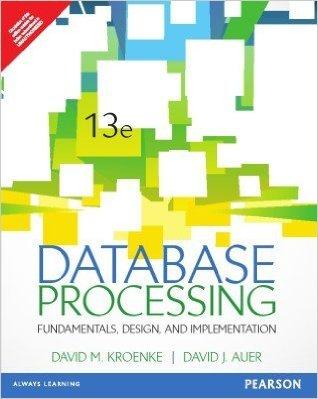Question
c++ //****************************************************************** // This program calculates the average, high score, low score, // number above the average, and number below the average for // a
c++
//****************************************************************** // This program calculates the average, high score, low score, // number above the average, and number below the average for // a file of test scores. // Assumption: File contains at least one non-zero value //****************************************************************** #include
// Declare function prototypes void CalculateStatistics(GradeStatistics& statistics, ifstream& inData); // Post: Data has been read and statistics calculated. void OpenFiles(ifstream& inData, ofstream& outData); // Post: File names have been prompted for and files are opened. // Input file name has been written on output file void InputGrades(GradeStatistics& statistics, ifstream& inData); // Pre: inData is assigned and not empty // Post: Grades have been read from inData, // numGrades is the number of grades in inData void CalculateAverage(GradeStatistics& statistics); // Post: Average grade has been calculated void CalculateHighest(GradeStatistics& statistics); // Post: Hightest grade has been calculated void CalculateLowest(GradeStatistics& statistics); // Post: Return value is the lowest grade void CalculateAboveAverage(GradeStatistics& statistics); // Post: Number of grades above the average has been calculated void CalculateBelowAverage(GradeStatistics& statistics); // Post: Number of grades below the average has been calculated void PrintResults(GradeStatistics statistics, ofstream& outData); // Pre: outData has been opened // Post: Output has been written on outData int main() { GradeStatistics statistics; // Declare and open files ifstream inData; ofstream outData; OpenFiles(inData, outData); if (!inData || !outData ) { cout > inFileName; text.open(inFileName.c_str()); cout > outFileName; outFile.open(outFileName.c_str()); outFile > grade; // Priming read while (inData) { // Process data statistics.grades[grade]++; statistics.numGrades++; inData >> grade; // Subsequent reads } } //********************************************************************* void CalculateLowest(GradeStatistics& statistics) { // Index of first nonzero grade is the low grade int lowGrade = 0; while (statistics.grades[lowGrade] == 0) lowGrade++; statistics.lowest = lowGrade; } //*********************************************************************
void CalculateHighest(GradeStatistics& statistics) { // Index of first nonzero grade is the low grade int highGrade = 100; while (statistics.grades[highGrade] == 0) highGrade--; statistics.highest = highGrade; } //********************************************************************* void CalculateAboveAverage(GradeStatistics& statistics) { int averagePlus = (int)(statistics.average) + 1; int index; int number = 0; for (index = averagePlus; index
void CalculateStatistics(GradeStatistics& statistics, ifstream& inData) { // Read and process grades InputGrades(statistics, inData); CalculateAverage(statistics); CalculateHighest(statistics); CalculateLowest(statistics); CalculateAboveAverage(statistics); CalculateBelowAverage(statistics); }
//****************************************************************** void PrintResults(GradeStatistics statistics, ofstream& outData) { outData
//****************************************************************** // Style Program // The program calculates number of words, average word length, // number of sentences, average sentence length, number of // uppercase letters, number of lowercase letters, and number of // digits in a file of text. //****************************************************************** #include
struct Counters { int uppercase; int lowercase; int digit; int word; int sentence; int ignore; };
// Function prototypes void OpenFile(ifstream&); // This function reads in a file name and opens the file. // If the file is not found, an error code is returned. Features Decode(char character); // This function reads in the names of the input file and the // output file and opens them for processing void IncrementCounters(Counters& counters, char character); // This function increments the appropriate character counter. void PrintTable(Counters counters); // Table is printed void InitializeCounters(Counters& counters); // This function prints the resulting cout int main() { // Prepare files for reading and writing ifstream text; Counters counters; OpenFile(text); if (!text) { cout > inFileName; text.open(inFileName.c_str()); cout
//***********************************************************
void InitializeCounters(Counters& counters) { counters.uppercase = 0; counters.lowercase = 0; counters.digit = 0; counters.word = 0; counters.sentence = 0; counters.ignore = 0; }

Step by Step Solution
There are 3 Steps involved in it
Step: 1

Get Instant Access to Expert-Tailored Solutions
See step-by-step solutions with expert insights and AI powered tools for academic success
Step: 2

Step: 3

Ace Your Homework with AI
Get the answers you need in no time with our AI-driven, step-by-step assistance
Get Started


